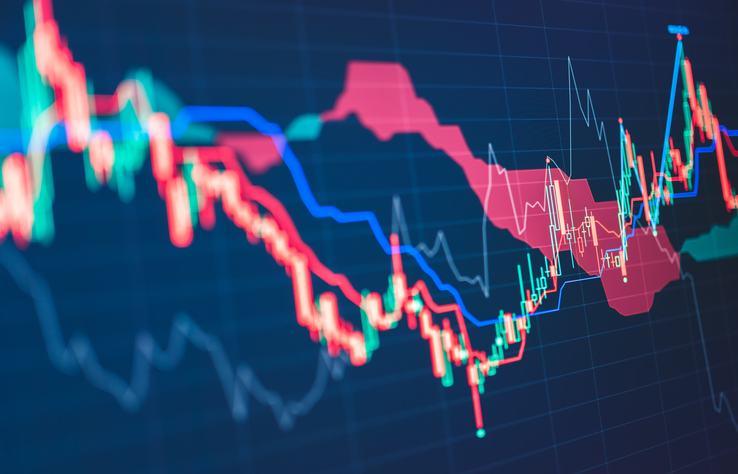Emerging markets defy expectations amid global headwinds
Emerging market (EM) assets have rallied this year, with debt leading the way and equities showing signs of renewed strength. Lower inflation, easier monetary policy, and shifting trade patterns are all contributing to the momentum.
Coming into 2025, emerging markets were largely shunned by investors, who were wary of escalating US tariffs, continued dollar strength, and an unwavering preference for US tech stocks and other perceived beneficiaries of the “Trump trade”, almost to the exclusion of all else.
Table of contents:
- Emerging markets outperform
- Demographics & growth potential
- Structural shifts in trade & resources
- Institutional credibility & market depth
- Valuations, positioning, & sentiment
- US dollar weakness – the “Big One”?
- Can the rally last?
***
Get weekly insights from The Intuition Finance Digest. Elevate your understanding of the finance world with expertly-crafted articles and podcasts sent straight to your inbox every week. Click here: https://www.intuition.com/finance-insights-the-intuition-finance-digest/
***
Emerging markets outperform
Yet, as the year has unfolded, emerging markets have defied expectations, delivering robust performance across various asset classes. Within the broader EM asset class, Chinese small caps have been stellar, with gains of around 50%, while Latin American assets have also shone – the BlackRock GF Latin American Fund is up 28.6% year-to-date.
In fixed income, emerging market debt has comfortably outperformed developed market assets. Local currency sovereign debt has returned nearly 13% year-to-date, while hard currency sovereign debt has returned close to 6%, comfortably outpacing US Treasuries. Easing inflation has been a key driver here, giving EM central banks flexibility to cut rates ahead of their developed market peers.

Emerging markets surge in 2025, led by Chinese small caps, Latin America, and double-digit EM debt returns.
Demographics & growth potential
EMs benefit from younger populations and expanding workforces, supporting consumption, investment, and productivity growth. This demographic advantage contrasts sharply with aging populations in the US, Europe, and Japan, positioning EMs for sustained economic expansion.

Younger populations and growing workforces are powering long-term growth in emerging markets.
Structural shifts in trade & resources
Global supply chains are being reconfigured. Countries like Mexico, Vietnam, and India are benefiting from “friendshoring” and “nearshoring” trends, attracting investment as companies diversify away from China.
The green transition is also driving resource demand. Chile and the Democratic Republic of Congo, for example, are seeing increased investment in copper and cobalt – essential inputs for renewable energy technologies.

Emerging markets like Mexico, Vietnam, and India gain from shifting supply chains, while resource-rich nations benefit from the green transition.
Institutional credibility & market depth
Over the past decades, many EM governments have strengthened credibility through disciplined fiscal policies, inflation targeting, and improved governance. Markets are getting deeper and more liquid, providing investors with greater access.
Much of this contrasts with developed markets, where slowing growth, weak productivity, and aging workforces weigh on economic performance. Financial market participants are also concerned about high sovereign and corporate debt levels, which raise risks of fiscal drag and debt refinancing challenges.

Stronger governance and fiscal discipline have boosted confidence in emerging markets, contrasting with slowing growth and rising debt in developed economies.
Valuations, positioning, & sentiment
Emerging market equities trade at significant discounts to developed market peers, particularly the US, with P/E ratios around 12 versus 22 (2025 estimates).
This discount reflects a high cost of capital in EMs, which in turn stems from persistent perception gaps, and underweight positioning. These headwinds are further amplified by factors such as credit rating agencies often overstating risks, especially in Africa.
Meanwhile, passive indexation, relative performance benchmarking, and short-termism have led investors to overpay for US assets. Some even describe the AI boom as “Dotcom on steroids,” illustrating the tendency to chase familiar growth narratives at the expense of undervalued (in this case EM) opportunities.

Emerging market equities remain deeply undervalued, trading at roughly half US valuations as investors chase familiar growth stories.
US dollar weakness – the “Big One”?
Arguably the most significant tailwind for EMs – the one that “floats all boats” – has been the weakening US dollar. Historically, soft-dollar environments have provided a backdrop for strong EM asset price performance. A weaker dollar boosts local currencies, attracts capital inflows into higher-yielding assets, and eases the debt burden for countries with significant dollar-denominated liabilities. This has been particularly beneficial for countries like Zambia and Ecuador.
The last sustained EM boom, in the 2000s, coincided with a structural bear market in the dollar, which lasted until the 2008 Global Financial Crisis (GFC).

A weaker US dollar has fueled emerging market gains, echoing the boom seen during the 2000s dollar downturn.
Can the rally last?
Following the GFC, investors were overweight EM assets and willing to pay a premium for their perceived growth advantage – a bet that ultimately disappointed as growth failed to meet expectations.
Today, few doubt EM growth potential, yet assets trade at a discount relative to developed markets. Ultimately, the continuation of the rally will hinge on the dollar. Should it reverse and resume a bull market, valuation discounts and other tailwinds may not be sufficient for EM assets to outperform. The good news is that currency cycles tend to be long, giving EM advocates reason for cautious optimism.
EM investing is not for the faint-hearted. Grouping all emerging markets together masks stark differences, and bumps in the road are inevitable – witness Argentina’s summer turmoil, or Brazil, which remains a concern for some investors given its defiance of the US. Yet for those willing to stomach the ride, EM bull markets can deliver outsized returns.
Intuition Know-How, a premier digital learning solution for finance professionals, has several tutorials relevant to the content of this article:
- Emerging Markets – An Introduction
- Inflation – An Introduction
- Inflation Indicators
- Equity Markets – An Introduction
- Bond Markets – An Introduction
- Economic Indicators – An Introduction
- GDP Indicators
- Trade Indicators
- Clean Energy
- Commodities – Renewables
- Commodities – Nonferrous Metals
- Fiscal Policy Analysis
- Foreign Exchange (FX) Market – An Introduction
Browse full tutorial offering



